Market Square: Heralding a New Era in Urban Planning
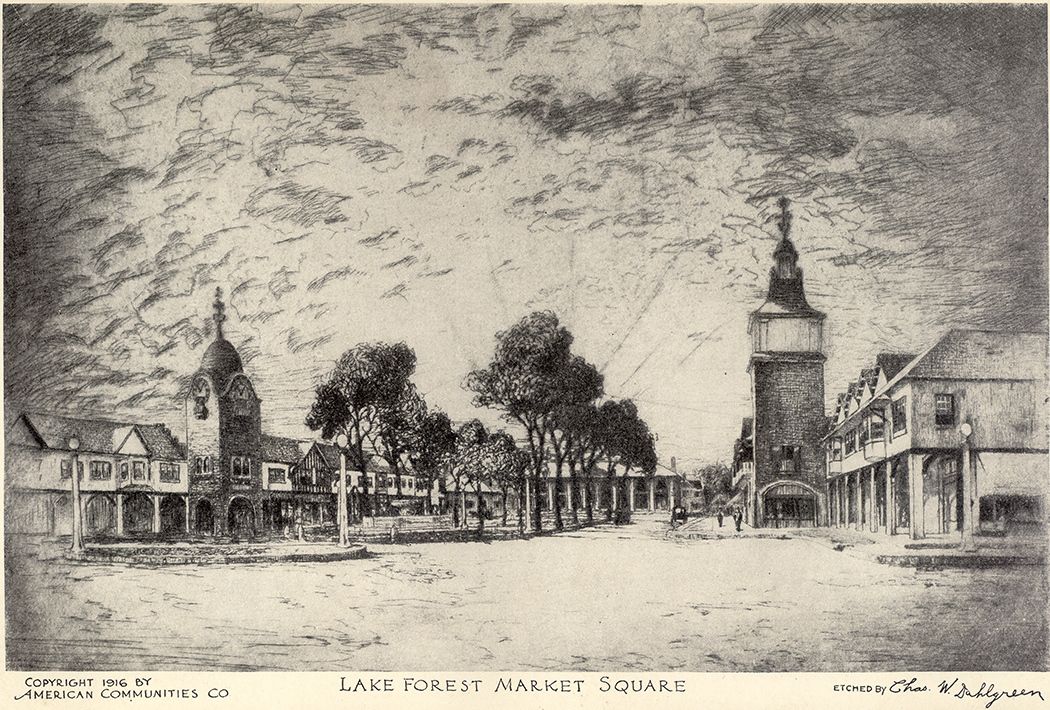
At its beginnings, Market Square broke new ground. In 1916, as the nation’s first artfully designed shopping center, it linked pedestrian, automobile, and train, and heralded a new era in urban planning. It completely revolutionized Lake Forest’s business district from an afterthought to a focal point of the community. And the forward-thinking members of the Lake Forest Improvement Trust, who developed Market Square, formed one of the nation’s very first real estate investment trusts.
The visionaries credited with the inception of the project are architect Howard Van Doren Shaw and developer Arthur T. Aldis. In 1913, with Cyrus H. McCormick Jr., David B. Jones, D. Mark Cummings and John V. Farwell Jr., they founded the Lake Forest Improvement Trust to raise money and purchase property.
Local agent John Griffith was hired to negotiate with the 11 property owners on Western Avenue and Forest Avenue, who began to raise their prices after word got out. To support their vision, the Trustees solicited funding largely from local residents, who became shareholders in the project. The eventual cost was about $750,000.

Shaw finalized his third, and last, set of plans in 1915 (see below). Earlier versions featured a shallower park, a library, and smaller towers. Because the lots purchased by the Improvement Trust were so deep – extending 260 feet back from Western Avenue – Shaw was able to create a U-shaped design, maximizing business frontage on the main street facing the train station, as well as creating room for parking and navigation by car. The U, framed by the two towers, surrounded a central park with two rows of large elm trees and a fountain.
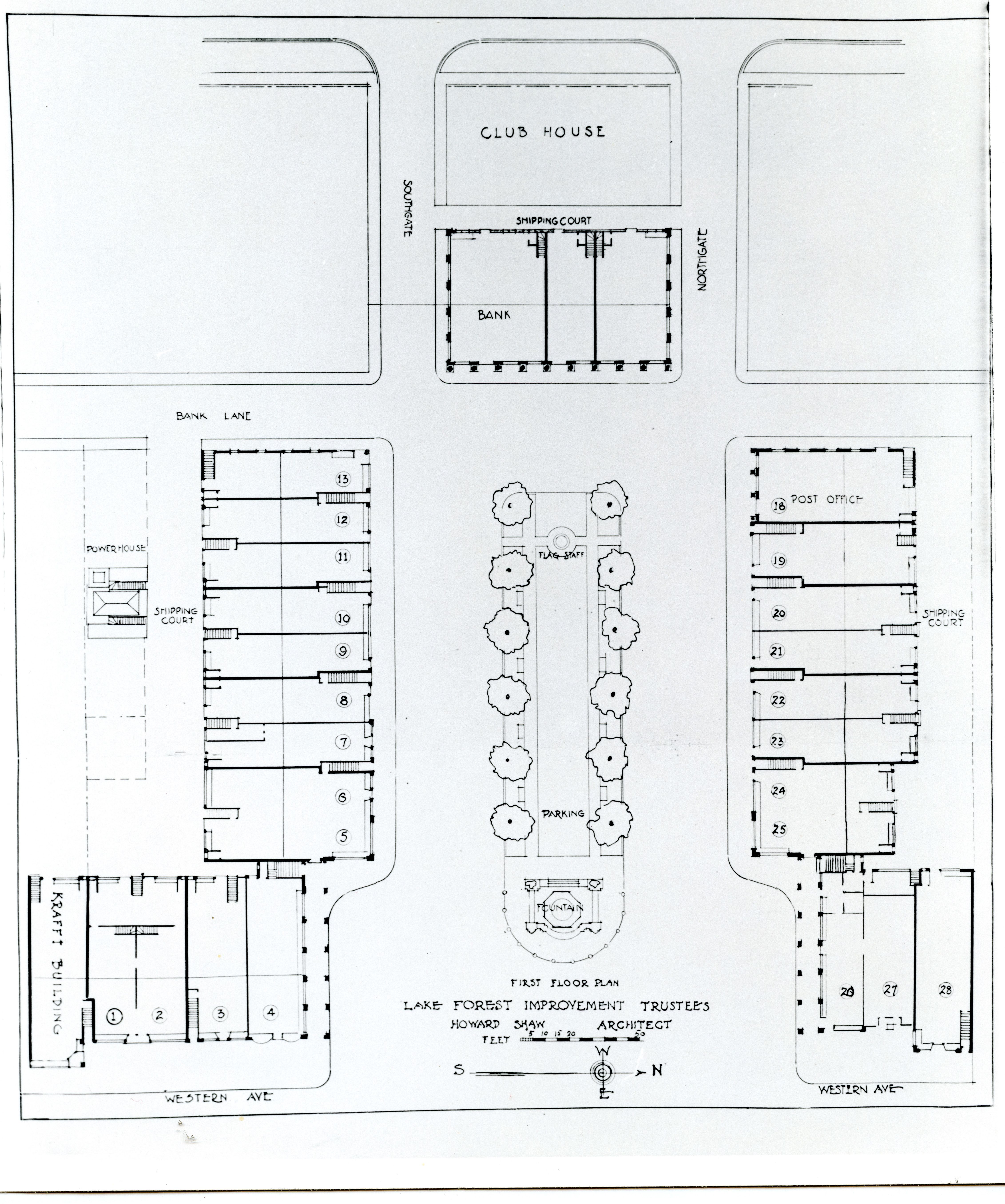
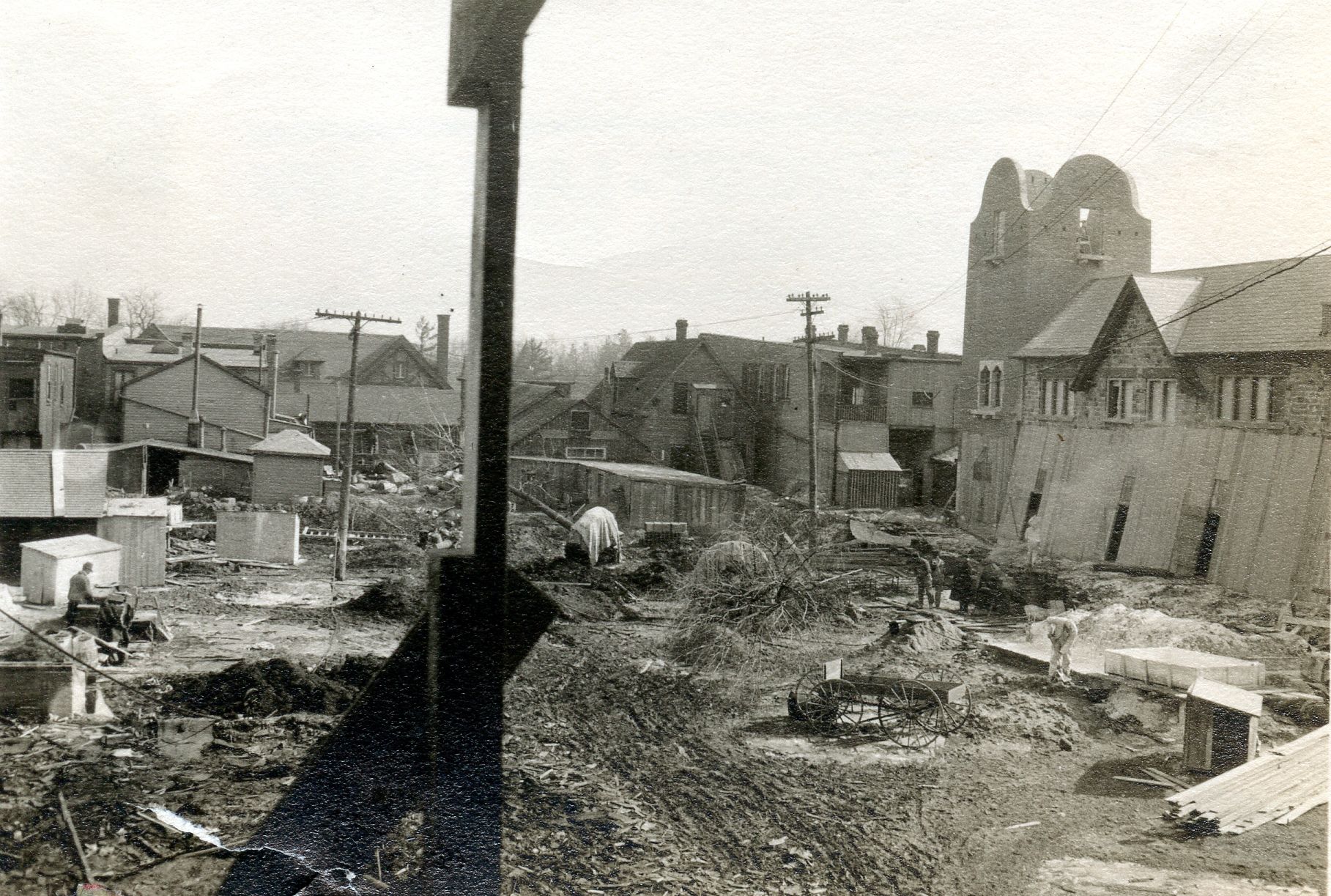
Construction began in the fall of 1915. The photo above looks east toward the train station. Here they haven’t yet knocked down or moved the original business buildings on Western Avenue, and you can see what they looked like from behind – not terribly attractive. Some of these buildings were torn down – others, like the Speidel building, were moved to Bank Lane, where it housed The Left Bank and the resale shop. Another building was moved just to the east, how the Daily Grind - it housed a tin smith and grocery warehouse.
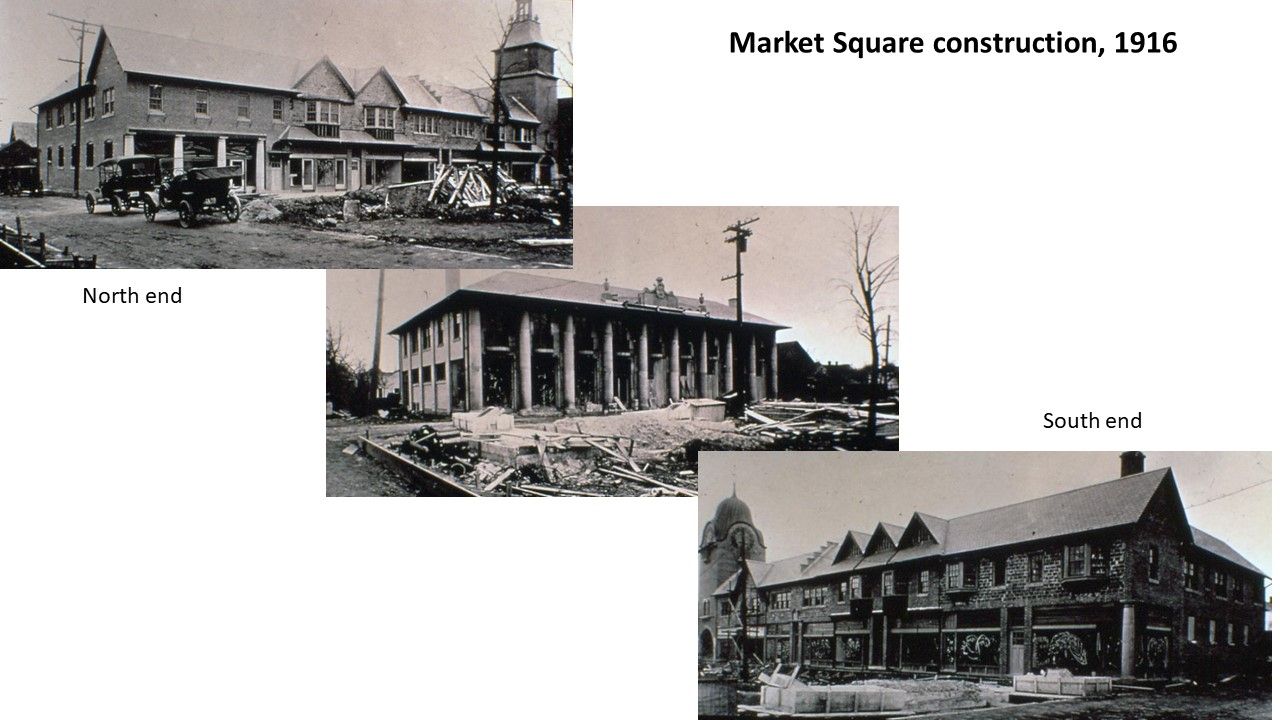
The above images from early 1916 show the quick progress that was made on the construction.
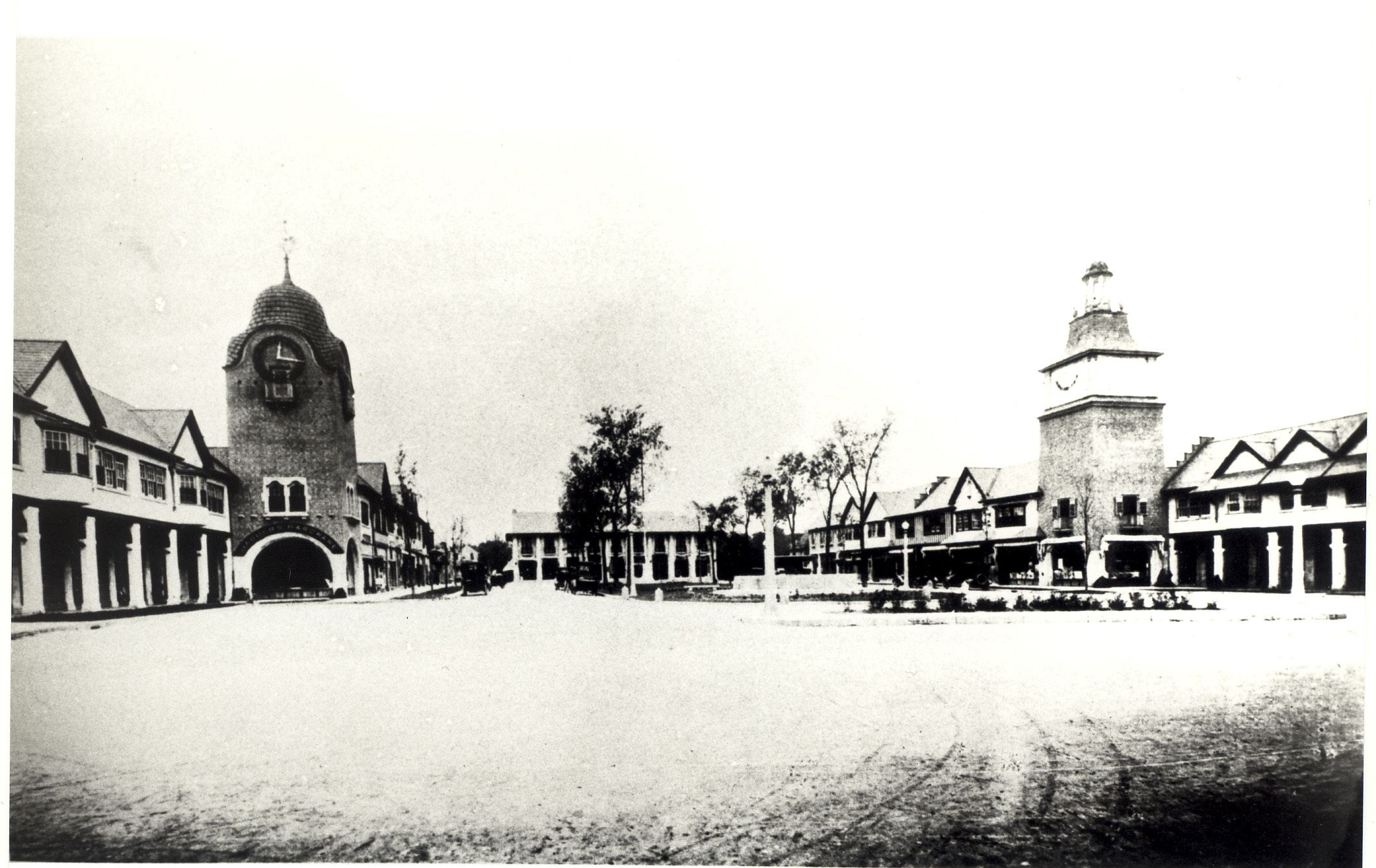
Because the lots purchased by the Improvement Trust were so deep – extending 260 feet back from Western Avenue – Shaw was able to create a U-shaped design, maximizing business frontage on the main street facing the train station, as well as creating room for parking and navigation by car. The U, framed by two towers, surrounded a deep central park with two rows of large elm trees and a fountain. Shaw added extra corners to capitalize on window space and varied the storefronts to give them definition. The layout increased prime retail space by 300% while affording full visibility to the train riding public.
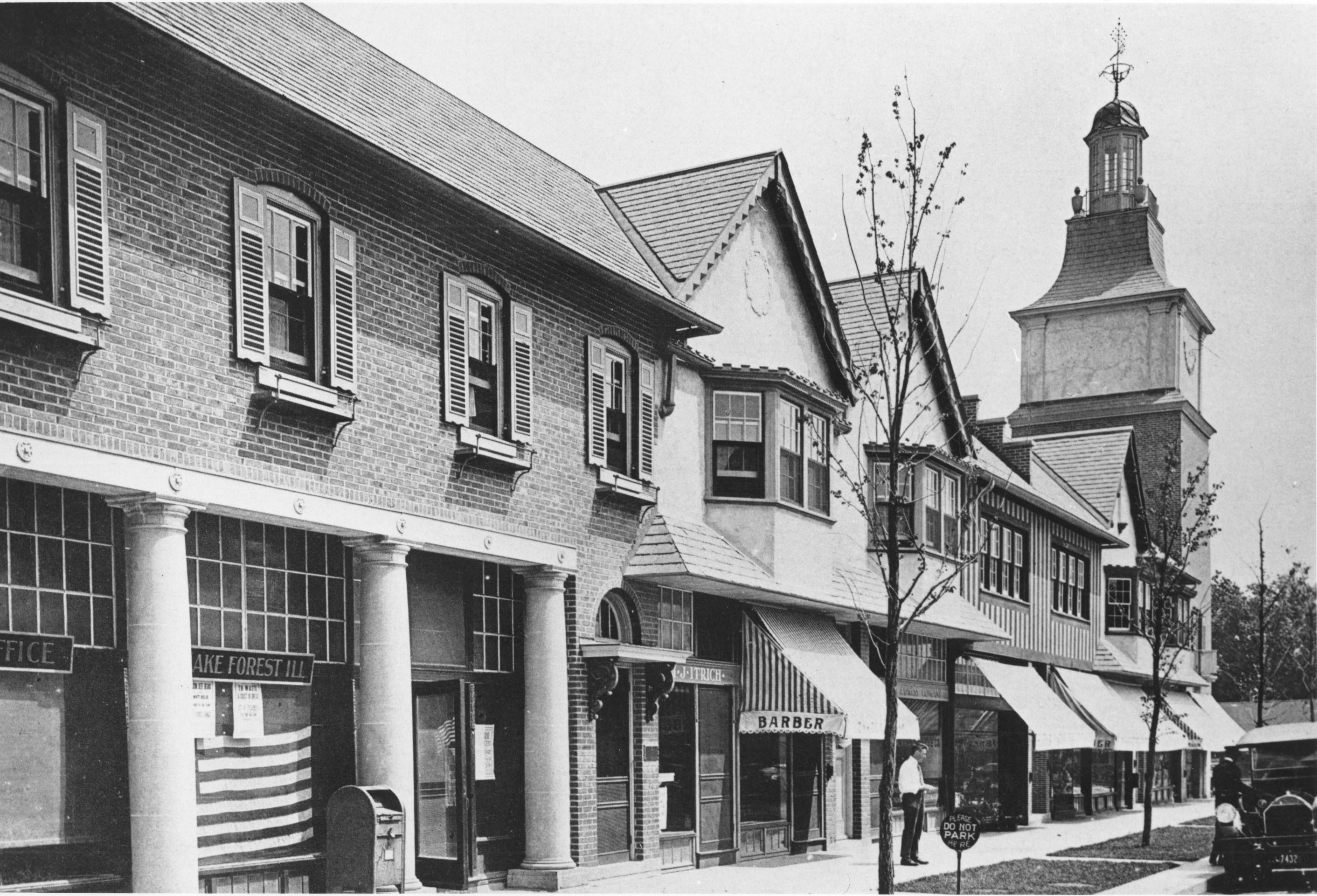
Market Square had its first tenant when barber Charlie Paulson started cutting hair here in April 1916. Others would follow that summer and fall as more storefronts became ready. The new shopping center also featured apartments on the second floor, allowing shopkeepers and their employees to live above their workplaces.
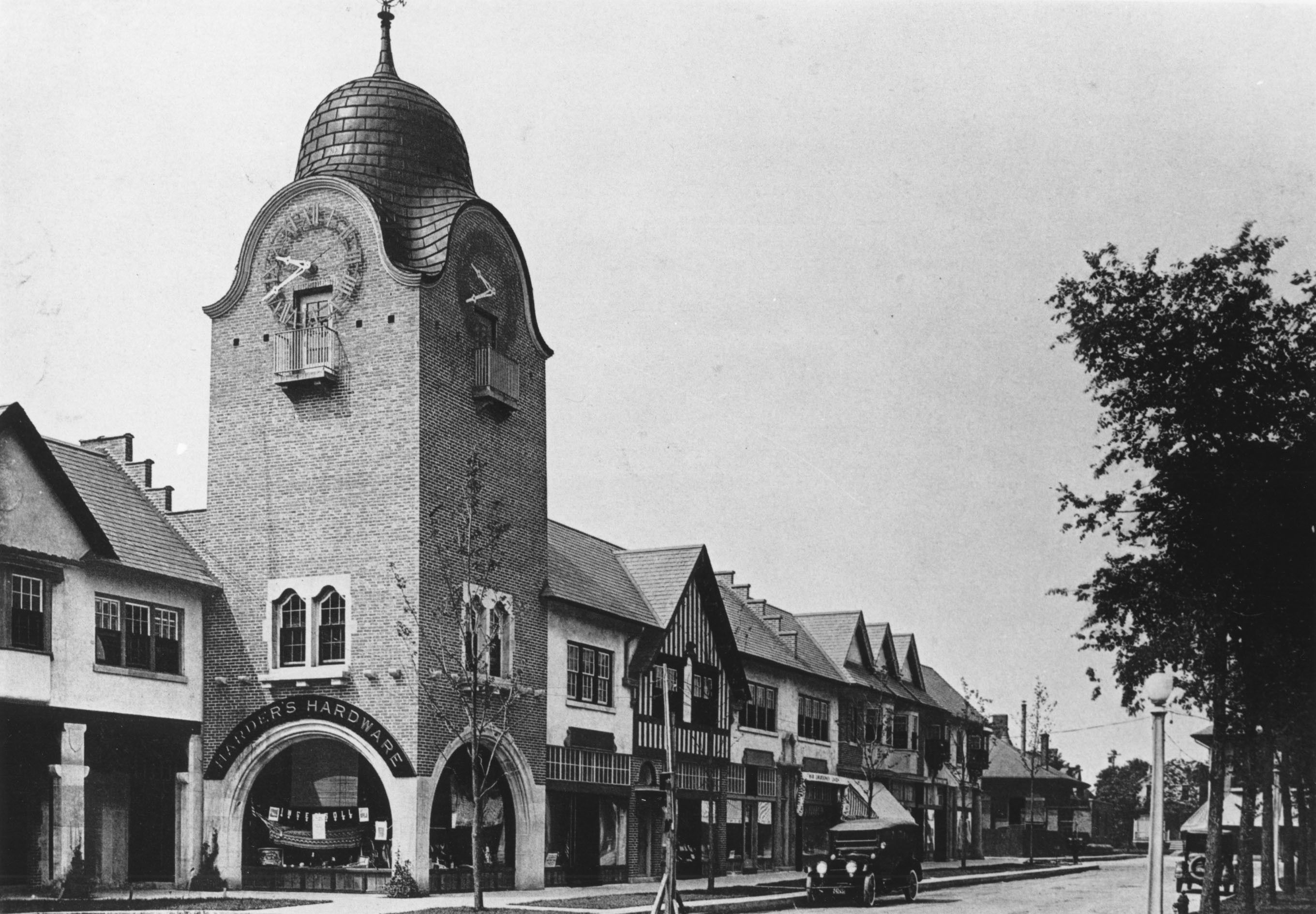
Most contemporaries compared the design to an English village square, but architect Howard Van Doren Shaw incorporated his usual mix of styles to create something unique: Flemish, Bavarian, Renaissance, Palladian, Baroque, and so on. He added extra corners to capitalize on window space and varied the storefronts to give them definition.
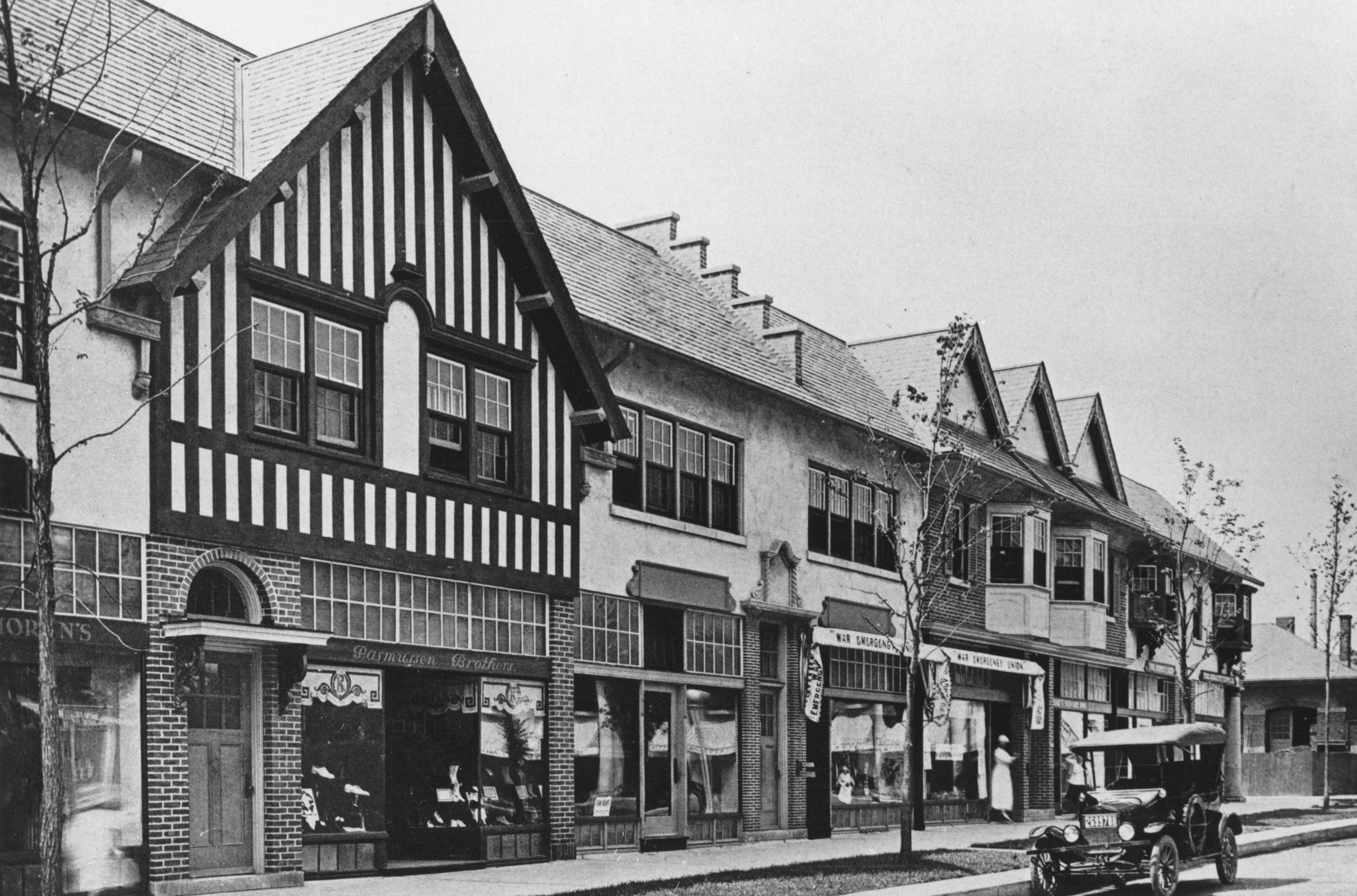

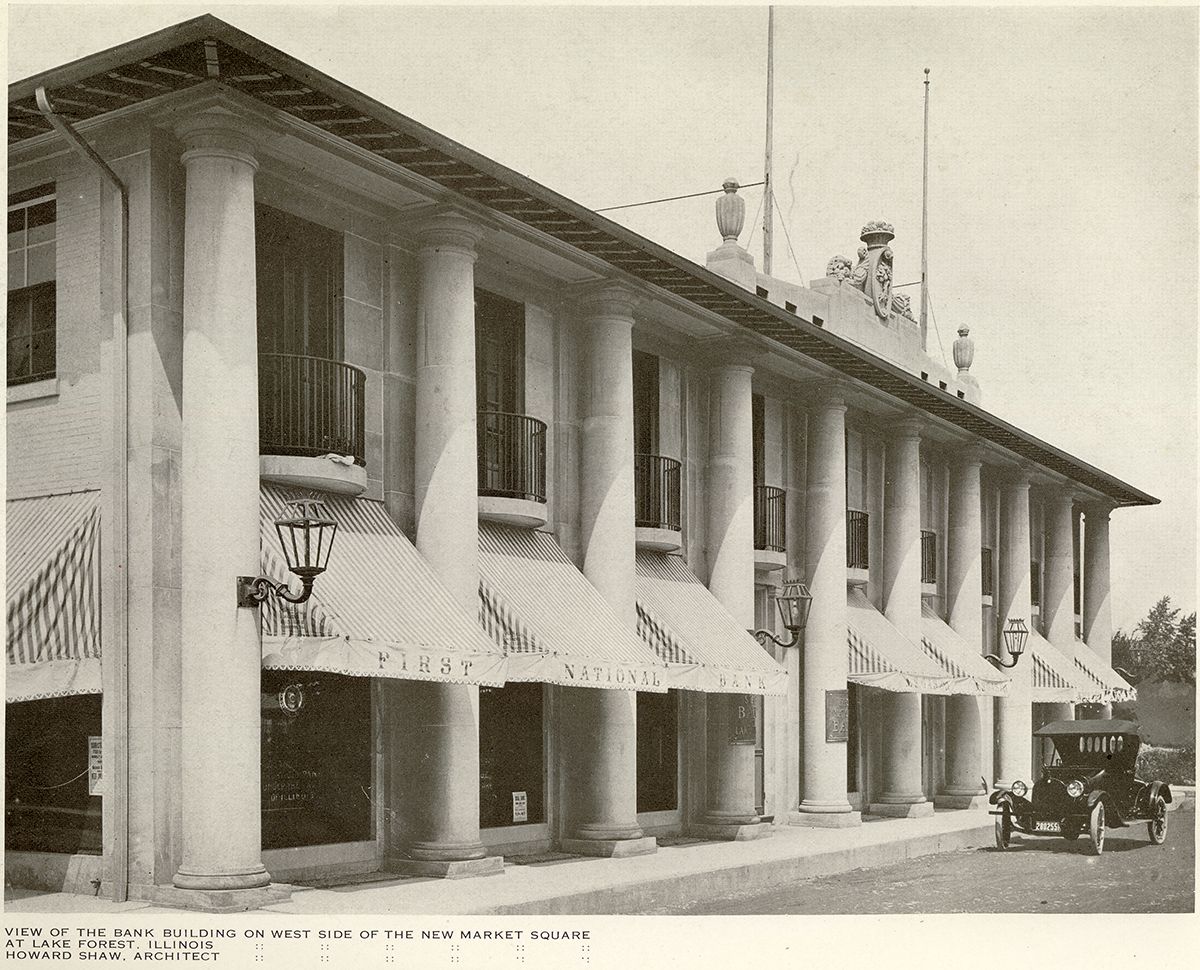
To ensure that Market Square was viewed as a community-wide endeavor, rather than a project executed by the town’s elite, the Trustees incorporated space for two of Lake Forest’s most egalitarian, civic-minded organizations: the Young Men’s Club, which owned this building, and the Young Women’s Christian Association, which rented space on the second floor of the bank.

There were other growing pains. The apartments were too cold, the streets weren’t paved yet, the boiler house emitted too much smoke. Some stores and offices still sat vacant.
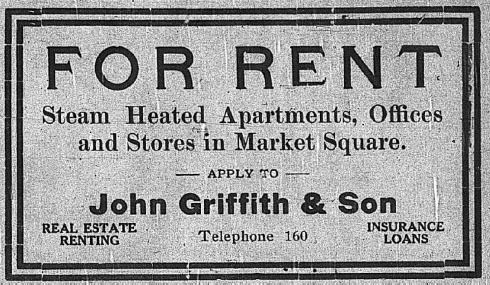
But with America’s entry into World War I in 1917, Market Square quickly was drafted into service as a rallying site. The War Emergency Union opened a Red Cross office and a canning kitchen in the unleased spaces. On December 2, 1917, the flagpole was raised and dedicated “to the men of Lake Forest who give themselves for the safety of their country and the world,” by troops and a large band from Fort Sheridan. Then on Armistice Day in November 1918, the celebratory parade ended in the Square, where Mayor Keene Addington addressed a jubilant crowd.
